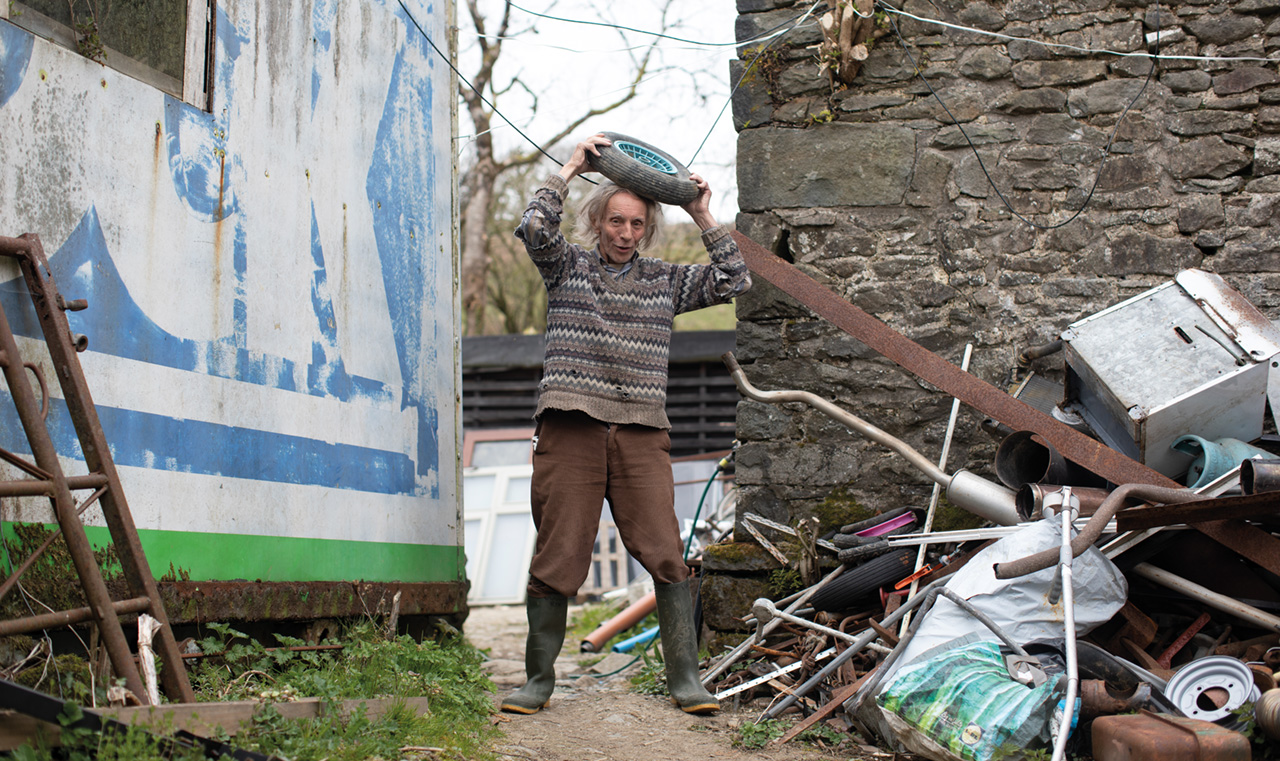Wheel estate
Photojournalist Ryan Ashcroft visits a remote, off-grid alternative community and finds them grappling with their own specific questions about self-isolation
High up in the hills of south-west Wales, a multi-generational community has been living away from mainstream society since its foundation in 1975. Welcome to Tipi Valley – a low impact settlement bursting with its own character, challenges and complexities.
I first learnt about Tipi Valley around four years ago whilst researching off-grid communities in the UK. I liked the idea of people living on their own terms away from the bustle of urban life and decided to take a journey down there to see it for myself. My point of contact was one of the original members, Rik Mayes, an eccentric and friendly individual with strong ties to the 1970s hippy movement and the Anglican Church. Mayes has been living in the valley since 1979. Twenty of the years were spent braving the elements in a tipi with his partner and two sons, Loki and Kai, who were both born there. Mayes then moved to a nearby low-impact dwelling built by his offspring, who had previously left the area for a few years and returned as fully trained carpenters.
I have visited the community on two occasions both under the wing of Mayes, who uses an old laptop powered by solar electricity to invite and accept guests to the valley. My first visit was four years ago and the second was six weeks back. Both times came with their own experiences and lessons.
Tipi Valley was born of the free party and hippy movement of the 1960s and 1970s – a dozen new age travellers searching for a peaceful existence away from the speed of “normal society”. The group heard about land for sale up at Cwmdu Valley and decided this was to be the spot for their new way of life. Their presence was met with hostility and conflict from locals in the early days, as free parties blasted on into the early hours and land was occupied without official permission. But as the years passed and the resident numbers grew, land was purchased field by field through a collective fund and the community began to settle and establish itself in the area.
Today, there are around 80 residents of varying ages scattered across the valley in tipis, yurts and turf-roofed round huts. Some of the adults work as labourers and teachers around the local villages, or seasonally at festivals assembling glamping tents and managing eco toilets. Others prefer to focus on tasks at the valley full time – collecting firewood, repairing walkways, tending to crops and carrying out maintenance tasks at their dwellings. Everyone lives a stripped-back, low-cost and low-impact existence in a world better connected to nature rather than technology.
My experiences at Tipi Valley were interesting to say the least. Back in spring 2017, I hitchhiked my way up the steep and remote hills in the back of a rickety old car full of gospel preachers who were passing through the area. On arrival, I was greeted by Mayes outside his dwelling, and he gave me a thorough tour of the valley. The land now spans across 200 acres and is set on the foothills of the epic Cwmdu Mountains. The area is one of stunning unrefined beauty, but Mayes tells me conditions can be treacherous. Heavy rain is common throughout the year and, in winter, snow casts a thick blanket over the landscape. In 1989 and 1991, two hurricanes battered the valley, sending tipis and possessions flying off into the wilderness.
After some walking, we arrived at the Big Lodge. This is the large communal tipi where guests sleep on the reed-matted floor and residents meet at the weekends to play music, drink tea and chat. Inside the tipi was an old French man with tired grey dreadlocks and leathery skin. Mayes had warned me his behaviour could be erratic, but he was a guest like anyone else and they wanted to give him a chance. Throughout the five days I was there, the man had convinced himself I was undercover in the military and that I was a spy, yet at the same time, he would make me a tea over the open fire and chat about his plans for the day. It was no surprise to learn that he had left the valley when I visited recently.
Most of the residents were inviting and accommodating as I wandered through the trees and fields past their homes. Some were understandably suspicious of cameras and journalists as a couple of sneering and ill-informed articles had been published in the past, but the majority were open to talk and share their experiences. I drank freshly grown peppermint tea and guzzled homemade elderflower wine in dwellings while chatting with some interesting characters and helped to move a young man’s yurt from one side of the valley to the other, as it’s a tradition for all residents to do so every six months to let the land regenerate.
Although I still got a friendly welcome from most during my brief visit, the atmosphere was slightly strained as tensions were higher due to differing opinions on Covid among the group and an extra level of wariness about the outside world. Tipi Valley has always been in self-isolation and residents’ efforts to remain that way have only been heightened by recent global events.
I might visit again at some point, once all this madness has ceased. Either way, I am glad that I got to experience off-grid living in a place so close yet so far away from home.

Leave a reply
Your email address will not be published.